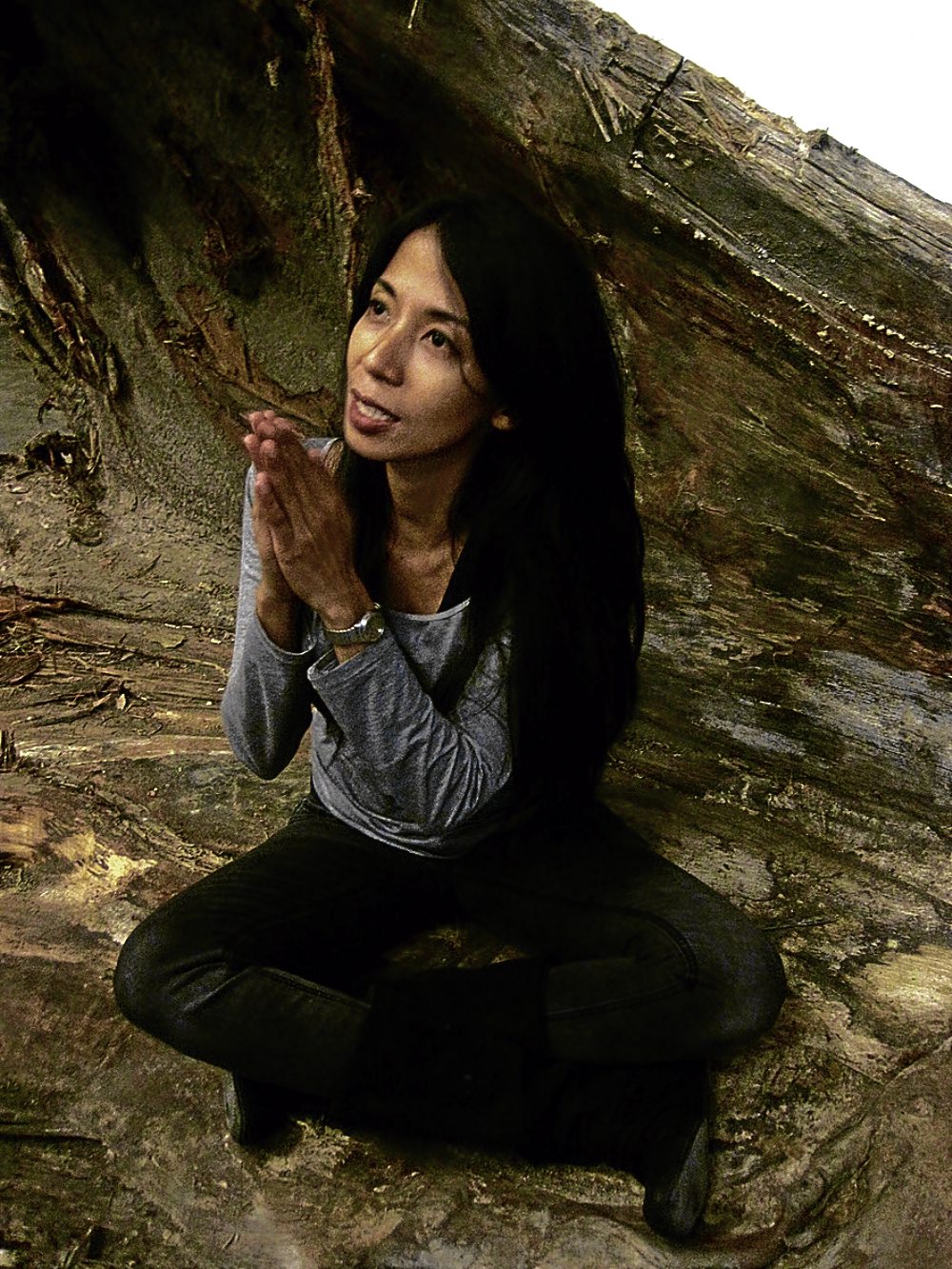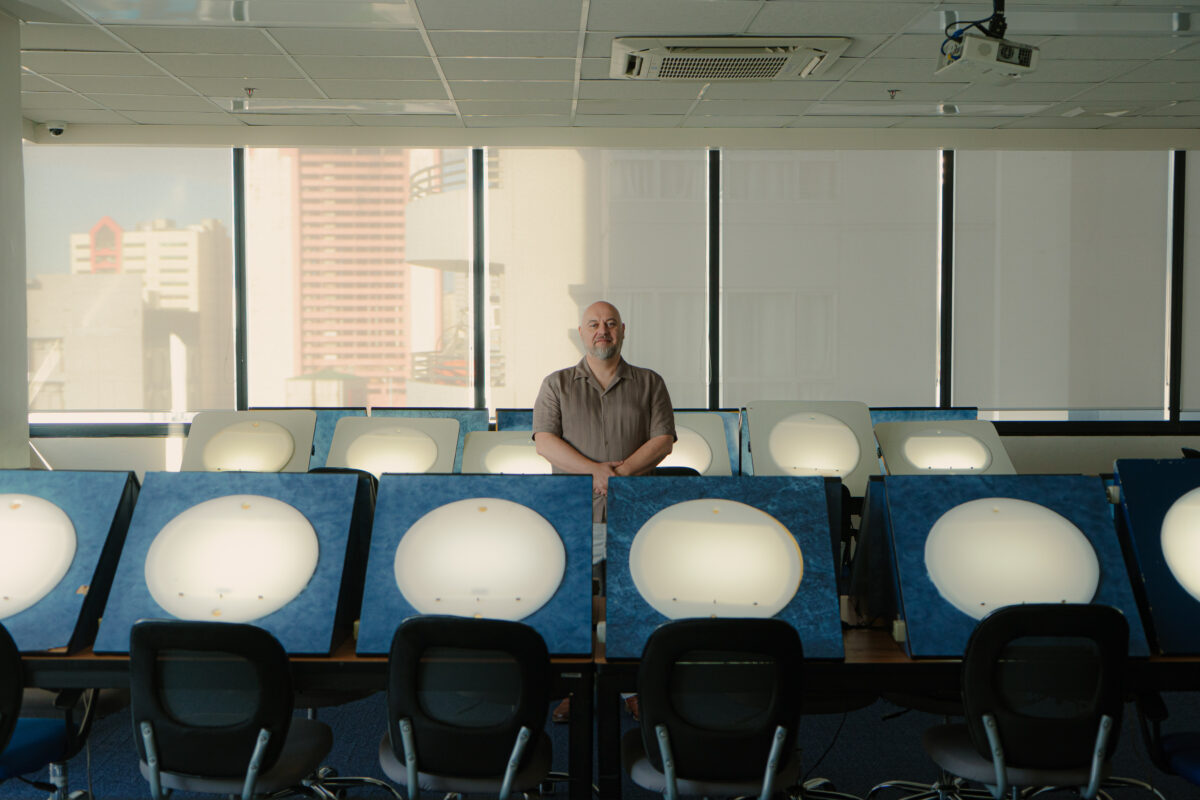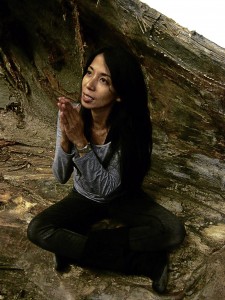
The onset of the monsoon, the opening of classes, Corona’s impeachment, even Pacquiao’s humbling defeat, may have diminished memories of 2010’s yearend disaster, typhoon “Sendong.” But not in Kiri Dalena’s powerful installation and twin videos “Washed Out” in Finale Art File’s Tall Gallery.
Like a mythic Cassandra, this thin, long-haired woman, who answers to the almost self-prophesying full name of Gabriela (after the heroine from the North) Krista (after Christ), issues a strong warning to viewers who go through a hushed walk inside a maze of sawn logs, originally from three huge chunks of balete, tipolo and lauan. It is a walk that needs no strident environmental and political activist’s statement because the chilling message can be felt.
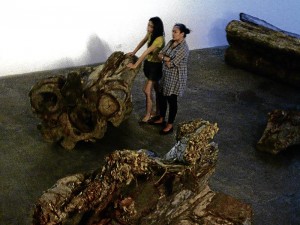
These logs are representative of the others that tumbled down from the mountains of Kapai in the Autonomous Region of Muslim Mindanao. Apart from the unexpected, thus deadly, floods that came in the night, the logs crushed hundreds of people to death, injured more and demolished property on their path at the height of the storm.
Iligan and Cagayan de Oro cities are still in the midst of trauma relief and rebuilding.
Dalena, daughter of painter Danny Dalena and sculptor Julie Lluch and youngest sister of fellow visual artists Aba and Sari, remembers the fatal night of Dec. 16. She was at the lantern parade of University of the Philippines Diliman and noticed how unusually windy it was. The next morning, a cousin sent a message that her house was flooded, with all their stuff floating in the water.
Dalena says: “I found it strange. I’ve never heard of a flood hitting Iligan in the past. To my knowledge, storms never go the way of Iligan. More messages came in. The images posted by family members on the Internet followed. That was when we started to grow more worried.”
From Iligan
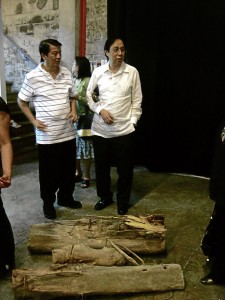
She had reason to be anxious. The Lluchs are from Iligan. The city was where the Manila-born and raised Dalena girls spent joyous summers of their youth.
She continues: “I have plenty of cousins there who’re my age. We were wild in the sense that we loved exploring our surroundings. Upon waking up, the first thing we’d do was climb trees. We knew where the birds’ nests were, if the fruits of the trees near us had ripened. We turned frogs’ eggs into necklaces; dug our own fishponds; kept snails, frogs and flying lizards as pets. When there was rain and water collected nearby, we’d be there immediately, soaking ourselves. We made up names for weeds (“water bombs”) and other plants or trees (aslum de lido) whose real names we didn’t know.”
This affinity with nature helped shape her decision to major in Human Ecology at UP Los Baños before she eventually gravitated to the arts. In high school, she thought she “would rather deal with the environment and animals and imagined myself working for something like National Geographic magazine in the future.”
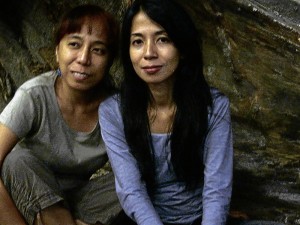
Her exposure to politically aware parents also enabled her to articulate what was wrong when she saw it.
She recalls: “When I was nine, I always wrote down the plate numbers of smoke belchers on my way to school on the school bus. Then I sent the list to the Land Transportation Office. One day, some policemen (they looked like policemen, but I’m not sure now) came to my school and house and told me they received my letters and thanked me.”
All that seems child’s play compared to Sendong’s aftermath when she found herself “hitching” a ride in a military chopper during the Christmas season to film what would go into the two videos projected on the gallery walls. Dalena wasn’t even conceptualizing an exhibit then.
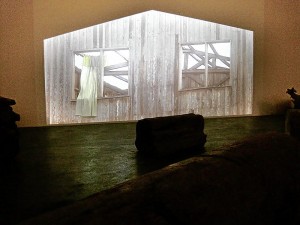
She says, “There was space in one of the helicopters bringing food aid to the hinterland barangays that were cut off by Sendong. I was with an Inquirer correspondent. I asked permission from the general in charge of the helicopters and waited for available space. This was my second time to ride a Huey, so I was not uncomfortable about going very close to the edge to shoot the ground. What I didn’t like was a machine gun fixed on the side. It was intimidating. I was told it was for security because the helicopter was flying over areas known to be enemy lairs. I cropped the gun from the shots, but I wished that they dismantled it and just placed a symbol for the relief mission.”
When she later planned the exhibit, she didn’t realize she had to undergo bureaucratic red tape with various levels of the Departments of Social Welfare and Development, and Environment and Natural Resources. She had to make them understand what she would use the extraordinarily big logs for. These departments found the idea of an installation new. Getting the right permits took all of four months, starting Valentine’s Day.
Mother’s assistance
Dalena says: “Mom helped immensely in this. I don’t think this was possible without her. She shared my travails and showed patience in Iligan while we were in the process of getting a permit. Months after the storm, we still go to the seashore together looking at remnants of the logs.”
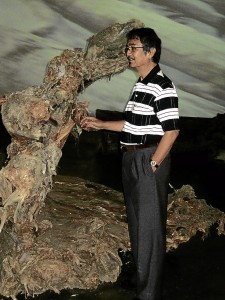
The video projections, portions of which show the remaining forested areas of the ARMM, the length of the mighty Mandulog River that overflowed, the ghost villages, even children playing by the shore at dusk to symbolize hope, were not without their challenges in mounting.
Dalena says Finale has projectors, but they weren’t enough for what she envisioned as a larger-than-life projection. What ensued were more collaborations with the technical and artistic sectors.
Canon, sponsor of the high-resolution projectors for a month, informed the artist that it was their first involvement in an art gallery/video installation. Optima Digital graded the images.
Her art network pitched in. A photographer, a filmmaker and an installation artist lent their equipment, such as media players and memory cards, for free.
The other hard part was conceptualizing which of the many images she shot would go into the projections. What she was sure of was the image of a ghostly house, except for a window where a curtain is seen moving at the slightest breeze.

Dalena says: “I wanted the house in there. That house is etched in my memory. Although it was emptied of contents, the roof missing and most of its walls were down, it was still standing. That fluttering curtain was the only clue that it used to be a very normal house.”
She shares credit with curator Lisa Chikiamko, who helped on the video, the placement of logs, and making the content coherent.
What she wants is for viewers, particularly schoolchildren on field trips, to experience “what it was like to be in the presence of the logs,” she says.
She adds that the three-dimensional nature of the installation and the interaction with the space can make them understand the disaster which will be near-impossible to attain if seen on something flat like newspaper or television images.
“Washed Out” is on view until June 30. Finale is at La Fuerza Compound, 2241 Chino Roces Ave., Makati City.

